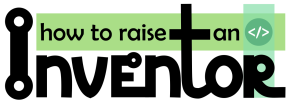Successful completion of the two-year Erasmus + KA2 Strategic Partnerships project ” HOW TO RAISE AN INVENTOR. TECHNOLOGY AND ENGINEERING LEARNING MATERIAL FOR SCHOOLS“.
Project partners, seeking to contribute to expansion of the STEAM initiatives, have set the following goal: to improve the capabilities of pupils in primary and secondary educational institutions in the fields of technology and engineering.
The partners carried out the following tasks:
1) created an online training tool “How To Raise an Inventor” for pupils aged 11-13 (7th grade in most countries) to provide pupils skills in STEAM and contribute to the formation of their future career choices. The tool is available in English, Lithuanian, Dutch, Polish and Latvian;
2) 9 teachers tested the training tool with 101 pupils in three schools in Lithuania, Latvia and the Netherlands in classes or as an extra-curricular activity during school year 2018/2019;
3) evaluated the effectiveness of the tool;
4) improved teachers’ STEAM subject knowledge and methodological skills;
5) disseminated the project’s results to a wide audience in partner countries and outside them.
The training tool “How to Raise an Inventor” consists of four modules. Teachers and learners acquire knowledge about the whole set of tools: Microbit, Lego Mindstorms and 3D technologies.
Modules “Micro:bit”, “The Art of Making” and “Build an Arm Wrestling Robot” are based on the formulation of real-life technical problems, hands-on application of tools and search for problem solution by applying “design thinking” methodology, which brings together skills in creative, critical and interdisciplinary thinking, teamwork and cooperation. The fourth module “How to Make Ideas and How They Travel” cultivates pupils’ user-value orientation and the ability to turn technological solutions into business solutions. This way, lesson materials link technical education with entrepreneurship training.
Teacher’s notes with methodology instructions and tips accompany each lesson or project. Based on teacher’s feedback after the testing period, module developers prepared recommendations about the use of each module. This makes the materials possible to use even for beginner teachers. All four modules together are sufficient for weekly technology classes or extra-curricular activities for the entire school year.
The intellectual outcome was greatly influenced by the fact that the partnership managed to attract partners who are very experienced in creating lesson materials. They also cooperated with technology experts from outside of the partnership.
The research prepared by partners evaluated pupils’ skills and attitudes towards STEAM. It showed that most pupils score their long-term interest in STEAM at about a 3 out of 5, with the distribution being slightly skewed towards choosing a career in STEAM. However, based on self-evaluation, pupils’ general STEAM skills and interest in STEAM did not increase. This might be due to the fact that pupils were learning things that are generally difficult, and this made them realize how much they do not know yet. But the survey clearly indicated that pupils think that their knowledge and skills related to project modules have improved.
An expert conclusion about the suitability of the lesson materials was provided by STEAM professionals and methodology experts. It will be used for further dissemination and use of the training materials by other STEAM orientated schools and individual teachers, self-learners in partner countries as well as worldwide.
The biggest positive impact in the partnership has been expected and occurred in partner schools. In Latvia, technological training will become compulsory from 2020 as per state regulation. The project has helped the partner school from Riga to become fully prepared for this in advance. At the Lithuanian school, the training tool has helped to enhance the content of engineering lessons with new technological tools. At the Dutch School, the project was the first encounter with STEAM teaching. All schools continue learning from the project’s lesson materials in the framework of their curriculum.
Project’s impact outside partner organizations was reached thanks to numerous dissemination events and learning activities organized for pupils and teachers. Through the network of associated partners, the strategic principle of joining formal, non-formal and self-driven learning is implemented. We expect that the number of people who benefit from the project will rise even more after the project’s official end.


